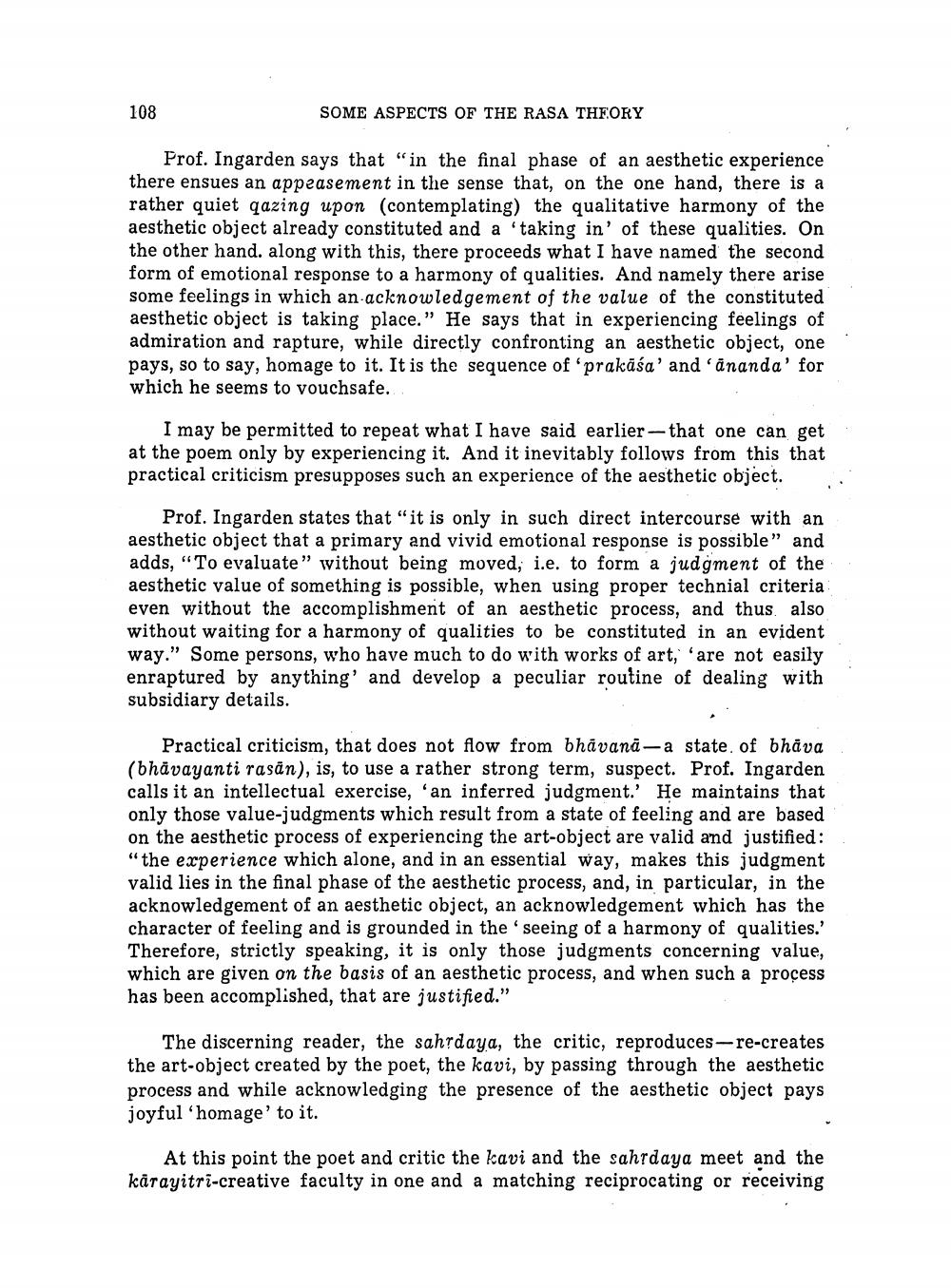________________
108
SOME ASPECTS OF THE RASA THEORY
Prof. Ingarden says that "in the final phase of an aesthetic experience there ensues an appeasement in the sense that, on the one hand, there is a rather quiet qazing upon (contemplating) the qualitative harmony of the aesthetic object already constituted and a 'taking in' of these qualities. On the other hand, along with this, there proceeds what I have named the second form of emotional response to a harmony of qualities. And namely there arise some feelings in which an acknowledgement of the value of the constituted aesthetic object is taking place.” He says that in experiencing feelings of admiration and rapture, while directly confronting an aesthetic object, one pays, so to say, homage to it. It is the sequence of prakāśa' and 'ānanda' for which he seems to vouchsafe.
I may be permitted to repeat what I have said earlier that one can get at the poem only by experiencing it. And it inevitably follows from this that practical criticism presupposes such an experience of the aesthetic object.
Prof. Ingarden states that "it is only in such direct intercourse with an aesthetic object that a primary and vivid emotional response is possible" and adds, "To evaluate” without being moved, i.e. to form a judgment of the aesthetic value of something is possible, when using proper technial criteria even without the accomplishment of an aesthetic process, and thus also without waiting for a harmony of qualities to be constituted in an evident way." Some persons, who have much to do with works of art, are not easily enraptured by anything' and develop a peculiar routine of dealing with subsidiary details.
Practical criticism, that does not flow from bhāvanā - a state of bhava (bhāvayanti rasan), is, to use a rather strong term, suspect. Prof. Ingarden calls it an intellectual exercise, 'an inferred judgment.' He maintains that only those value-judgments which result from a state of feeling and are based on the aesthetic process of experiencing the art-object are valid and justified: "the experience which alone, and in an essential way, makes this judgment valid lies in the final phase of the aesthetic process, and, in particular, in the acknowledgement of an aesthetic object, an acknowledgement which has the character of feeling and is grounded in the 'seeing of a harmony of qualities.' Therefore, strictly speaking, it is only those judgments concerning value, which are given on the basis of an aesthetic process, and when such a process has been accomplished, that are justified."
The discerning reader, the sahrdaya, the critic, reproduces-re-creates the art-object created by the poet, the kavi, by passing through the aesthetic process and while acknowledging the presence of the aesthetic object pays joyful "homage' to it.
At this point the poet and critic the kavi and the sahrdaya meet and the kārayitri-creative faculty in one and a matching reciprocating or receiving




